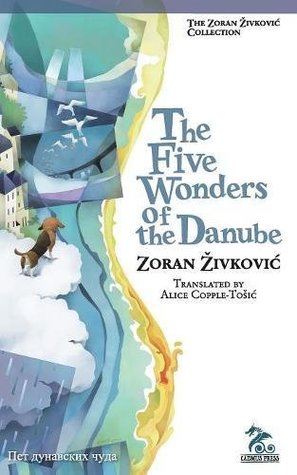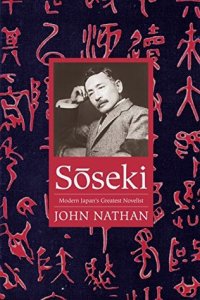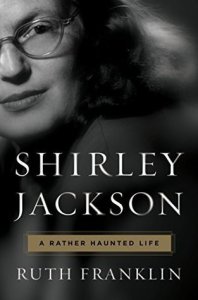I am beginning this particular Book Trail post with a translated novel I reviewed last month, and very much enjoyed. As ever, I have used the ‘Readers Also Enjoyed’ tool on Goodreads to generate this list.
 1. Kitchen by Banana Yoshimoto
1. Kitchen by Banana Yoshimoto
‘Kitchen juxtaposes two tales about mothers, transsexuality, bereavement, kitchens, love and tragedy in contemporary Japan. It is a startlingly original first work by Japan’s brightest young literary star and is now a cult film. When Kitchen was first published in Japan in 1987 it won two of Japan’s most prestigious literary prizes, climbed its way to the top of the bestseller lists, then remained there for over a year and sold millions of copies. Banana Yoshimoto was hailed as a young writer of great talent and great passion whose work has quickly earned a place among the best of modern literature, and has been described as ‘the voice of young Japan’ by the Independent on Sunday.’
2. Woman on the Other Shore by Mitsuyo Kakuta
‘This compelling novel, widely acclaimed for its perceptive portrayal of the everyday lives and struggles of Japanese women, struck a deep chord with readers throughout Japan. In 2005 it won the prestigious Naoki Prize, awarded semiannually for the best work of popular fiction by an established writer. Sayoko, a thirty-five-year-old homemaker with a three-year-old child, begins working for Aoi, a free-spirited, single career woman her own age who runs a travel agency-housekeeping business. Timid and unable to connect with other mothers in her neighborhood, Sayoko finds herself drawn to Aoi’s independent lifestyle and easygoing personality. The two hit it off from the start, beginning a friendship that is for Sayoko also a reaffirmation of what living is about. Aoi, meanwhile, has not always been the self-confident person she appears to be. Severe classroom bullying in junior high had forced her to change schools, uprooting her and her family to the countryside; and at her new school, she was so afraid of again becoming the object of her classmates’ cruelties that she spent most of her time steering clear of those around her. The present-day friendship between Sayoko and Aoi on the one hand, and Aoi’s painful high school past on the other, form a gripping two-tier narrative that converges in the final chapter. The book touches on a broad range of issues of concern to women today, from marriage and childrearing to being single and working for oneself. It is a universal story about both the fear and the joy of opening up to others.’
3. Now You’re One of Us by Asa Nonami 
‘In the tradition of Daphne du Maurier’s Rebecca and Ira Levin’s Rosemary’s Baby, here is a new classic about the bride who’s no longer sure what to think. All families have their own rituals, secrets, and credos, like a miniature religious cult; these quirks may elicit the mirth or mild alarm of guests, but the matter is rather more serious if you’re marrying into a household. If its’s a Japanese one with a history, the brace yourself: some surprising truths lurk around the corner.’
4. Beyond the Blossoming Fields by Junichi Watanabe
‘As a young girl from a wealthy family, Ginko Ogino seems set for a conventional life in the male-dominated society of 19th-century Japan. But when she contracts gonorrhea from her husband, she suffers the disgrace of divorce. Forced to bear the humiliation of being treated by male doctors, she resolves to become a doctor herself in order to treat fellow female sufferers and spare them some of the shame she had to endure. Her struggle is not an easy one—her family disowns her, and she has to convince the authorities to take seriously the very idea of a female doctor and allow her to study alongside male medical students and take the licensing exam. Based on the real-life story of Ginko Ogino—Japan’s first female doctor—Jun’ichi Watanabe does full justice to the complexity of her character and her world in a fascinating and inspirational work of fiction.’
 5. Salad Anniversary by Machi Tawara
5. Salad Anniversary by Machi Tawara
‘In her collection of brief poems, Tawara explores the fleeting emotions and momentary experiences that comprise modern life and love.’
6. Astonishments: Selected Poems by Anna Kamienska
‘Kamienska came of age during the horrors of the Nazi occupation of Poland and lived under Communism. These experiences, as well as the sudden death of her husband, led her to engagement with the Bible and the great religious thinkers of the 20th century. Her poems record the struggles of a rational mind with religious faith, addressing loneliness and uncertainty in a remarkably direct, unsentimental manner. Her spiritual quest has resulted in extraordinary poems on Job, other biblical personalities, and victims of the Holocaust. Other poems explore the meaning of loss, grief, and human life. Still, her poetry expresses a fundamentally religious sense of gratitude for her own existence and that of other human beings, as well as for myriad creatures, such as hedgehogs, birds and “young leaves willing to open up to the sun.”‘
7. From the Fatherland, With Love by Ryu Murakami 
‘From the Fatherland, with Love is set in an alternative, dystopian present in which the dollar has collapsed and Japan’s economy has fallen along with it. The North Korean government, sensing an opportunity, sends a fleet of rebels in the first land invasion that Japan has ever faced. Japan can’t cope with the surprise onslaught of Operation From the Fatherland, with Love. But the terrorist Ishihara and his band of renegade youths – once dedicated to upsetting the Japanese government – turn their deadly attention to the North Korean threat. They will not allow Fukuoka to fall without a fight. Epic in scale, From the Fatherland, with Love is laced throughout with Murakami’s characteristically savage violence. It’s both a satisfying thriller and a completely mad, over-the-top novel like few others.’
8. The Oxford Book of Japanese Short Stories, edited by Theodore W. Goossen
‘This collection of short stories, including many new translations, is the first to span the whole of Japan’s modern era from the end of the nineteenth century to the present day. Beginning with the first writings to assimilate and rework Western literary traditions, through the flourishing of the short story genre in the cosmopolitan atmosphere of the Taisho era, to the new breed of writers produced under the constraints of literary censorship, and the current writings reflecting the pitfalls and paradoxes of modern life, this anthology offers a stimulating survey of the development of the Japanese short story. Various indigenous traditions, in addition to those drawn from the West, recur throughout the stories: stories of the self, of the Water Trade (Tokyo’s nightlife of geishas and prostitutes), of social comment, love and obsession, legends and fairytales. This collection includes the work of two Nobel prize-winners: Kawabata and Oe, the talented women writers Hirabayashi, Euchi, Okamoto, and Hayashi, together with the acclaimed Tanizaki, Mishima, and Murakami. The introduction by Theodore Goossen gives insight into these exotic and enigmatic, sometimes disturbing stories, derived from the lyrical roots of Japanese literature with its distinctive stress on atmosphere and beauty.’
Have you read any of these books? Which pique your interest?
 People in the Room by Norah Lange
People in the Room by Norah Lange
 Florida by Lauren Groff
Florida by Lauren Groff
 Translated into English by Alice Copple-Tošić and published by Cadmus Press, The Five Wonders of Danube consists of five chapters, each one taking place in or around a different bridge of the Danube river.
Translated into English by Alice Copple-Tošić and published by Cadmus Press, The Five Wonders of Danube consists of five chapters, each one taking place in or around a different bridge of the Danube river.
 3. Touched by Joanna Briscoe
3. Touched by Joanna Briscoe
 7. When Nights Were Cold by Susanna Jones
7. When Nights Were Cold by Susanna Jones


 Sōseki: Modern Japan’s Greatest Novelist by John Nathan
Sōseki: Modern Japan’s Greatest Novelist by John Nathan
 The Five Wonders of Danube by Zoran Živković
The Five Wonders of Danube by Zoran Živković
 Apparitions: Ghosts of Old Edo by Miyabe Miyuki
Apparitions: Ghosts of Old Edo by Miyabe Miyuki

